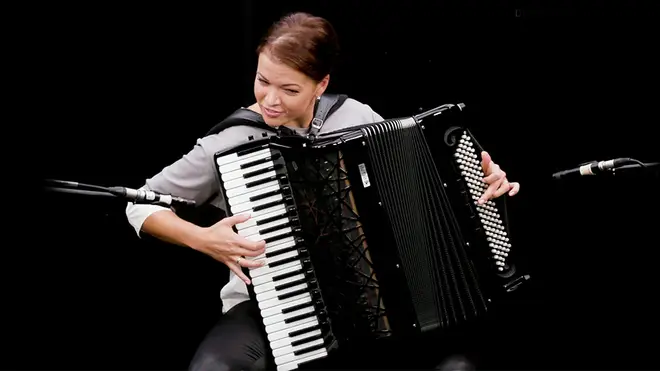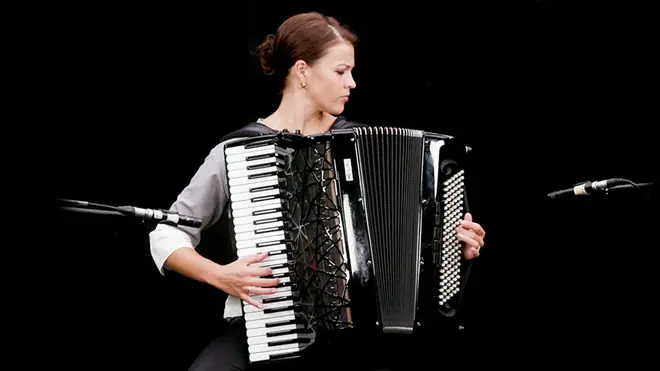On Air Now
The Classic FM Hall of Fame Hour 9am - 10am
23 May 2024, 09:39 | Updated: 23 May 2024, 11:50

How Does The Accordion Work? | Discover Instruments | Classic FM
Latvian-born accordionist Ksenija Sidorova introduces her wonderful instrument and its colourful history.
Close your eyes, and picture someone playing the accordion. If the first image that pops into your head is an old man in a beret playing beautiful folk music in the corner of a French café, you probably wouldn’t be alone.
But for classical accordionist Ksenija Sidorova, that’s a positive thing.
“It’s the cliché that classical accordionists try to move away from, but I think it’s a great part of our history and it really showcases the accordion from all sides,” she says in a new episode of Classic FM’s video series, Discover Instruments.
“It’s an instrument that speaks to many.”
Read more: Listen to this funky version of Lady Gaga on accordion >

“It was originally patented in Vienna, in 1829, only as a left-hand side,” Ksenija says. “The right hand used to hold it and the right-hand would be the accompaniment for songs. Since then, the accordion developed into a huge box with lots of different sounds and keyboards.
“It became a very popular instrument in the second part of the 20th century, particularly after the Second World War when people used to take this instrument to the forests after they fought. This was their sorrow, this was their joy, and it became an instrument that people played from parties to funerals to weddings.”
But in the second half of the 20th century, everything changed for the accordion. A number of additions were made to the instrument – including a huge new range of four and a half octaves of single notes – creating a fully polyphonic instrument with two manuals.
Now, it’s one of the most versatile instruments to write for, appearing in plenty of jazz and classical music, as well as folk.
Read more: The world is getting accordion and percussion emojis in 2020 >

The accordion has three main components: the right hand side, a piano or button keyboard; the bellows, which act like a bow; and the left hand side, which has 120 buttons.
To produce sound, Ksenija says, the basic motion is to “pull and press”.
Pulling the bellows allows you to control sound, dynamics and touch, while the keys control the pitch.
To tune the classical accordion, Ksenija says, “you need at least a week”.
“It all comes apart and there are a lot of screws. Each note is tuned by scratching a little bit off the metallic part of the voice. Then, the manufacturer puts it back in place.”

Fantasia on ‘Chiquilin de Bachin’ – accordionist Ksenija Sidorova | Classic FM
The accordion continues to develop every day, Ksenija says, and manufacturers are working increasingly closely with performers and composers, making the most out of this versatile instrument.
Many top conservatoires, including the Royal Academy of Music, now offer the classical accordion on their syllabus.
These days, a huge amount of new repertoire can be performed on the accordion – including Franck Angelis’ thrilling Fantasia on Astor Piazzolla’s theme ‘Chiquilin de Bachin’, which you can watch Ksenija perform above, backstage at the Royal Albert Hall where she played at Classic FM Live alongside guitarist, MILOŠ.
Discover more wonderful instruments on Classic FM’s YouTube channel.